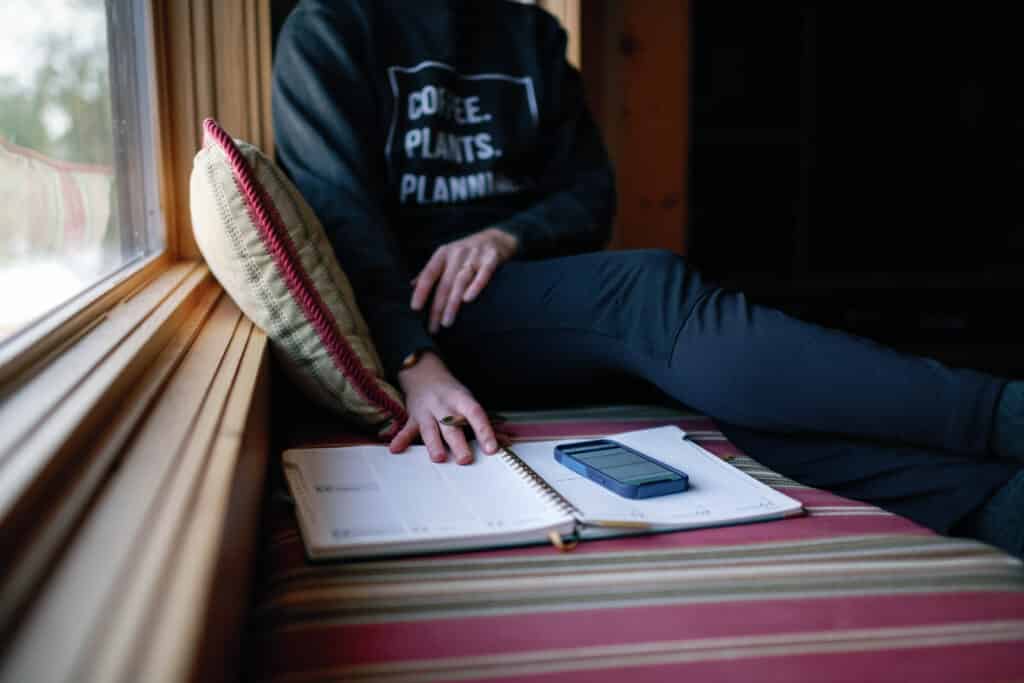We all succumb to the “easy buttons” in life, whether running through the drive-through for dinner, racking up credit card debt when we want something, or asking AI to write and create for us. The idea of finding and choosing the easiest route possible has permeated our modern lives to the point where we now shy away from a little bit of effort in favor of what’s easiest.
I don’t think we need to handwash all our clothes or churn butter each week, but there is a balance to strike between convenience and effort. Just because something requires more effort or is uncomfortable doesn’t mean it’s not the best option. And we might actually gain something from taking the harder route versus always choosing easy.
As Michael Easter states in his book, The Comfort Crisis, “Scientists are finding that certain discomforts protect us from physical and psychological problems like obesity, heart disease, cancers, diabetes, depression, and anxiety, and even more fundamental issues like feeling a lack of meaning and purpose.”
And, “we don’t have to deal with discomforts like working for our food, moving hard and heavy each day, feeling deep hunger, and being exposed to the elements. But we do have to deal with the side effects of our comfort: long-term physical and mental health problems.”
While pressing the “easy button” might be convenient and comfortable, perhaps it’s not always helpful or beneficial for us as humans.

The Difference Between “Helpful” and “Easy”
There’s a misconception about tasks that are “helpful” and “easy” because we tend to view them as the same thing, but what is helpful is not always easy and what is easy is not always helpful.
Helpful:
Effort now for payoff later.
Products, practices, and habits that fall under the helpful category solve a problem but are often not the quickest, “easy button” solution. Often these solutions require effort or are challenging, but are overall rewarding, and the benefits compound over time.
For example, meal prepping for the week is a helpful task. It requires planning your meals, creating a shopping list, buying the ingredients, and spending a few hours cooking and portioning meals. This can feel like a lot of effort and time. However, once the meal prep is done, you can spend less time cooking during the week and reduce the amount you eat out. You save time and money, eat healthier, and reduce daily stress around food.
Easy:
Payoff now for effort later.
Something easy is designed to provide a quick solution or an immediate result. The easy solution accommodates convenience and minimal change. Products, practices, and habits that fall under the easy category often come with a trade-off. You get convenience and a quick solution, but you “pay” for the convenience sometime in the future.
For example, using a credit card is an easy solution for purchases without an immediate need to pay in full. But, they’re not always beneficial since they can lead to high-interest debt and financial stress. Fast food is an easy option for quick and convenient meals but comes with unhealthy fats, sugars, and high levels of sodium that you pay for later with possible weight gain and increased risk of disease.
The Value of Doing Hard Things
I don’t think we need to forfeit easy solutions altogether. There are times when we need to use a credit card to make an important purchase or grab fast food to make dinner happen, but when we consistently make the easy choice over the helpful choice, we may experience long-term problems associated with rarely being uncomfortable.
What do we lose when we choose easy?
When we choose easy above all else, we lose many long-term benefits like the physical, mental, and emotional rewards of engaging in challenging tasks. Many of the benefits of choosing the harder route come during the process as well, so skipping the “journey” in favor of an immediate result leaves you with fewer opportunities for growth and lessons learned.
Think about exercise, it’s easy to skip workouts because you’re tired, you don’t want to, or you think you don’t have time, but without putting in the work you’ll never see the physical and mental benefits of exercising. You need to trade the short-term reward of doing something else, to get the long-term payoffs.
Learning a new language is very challenging for most people so it’s easy to skip lessons because it feels hard and overwhelming, but you won’t get the cognitive benefits or reach the goal of learning a new language without the hard work and effort.
Tackling uncomfortable or difficult tasks isn’t just about the end result, there’s also a lot of personal development that happens when you do hard things. In psychology, there’s the idea of the Window of Tolerance, which is essentially an individual’s stress tolerance or how resilient they are to stressors. The window is not a fixed size, it can be expanded by touching the edges of the window, feeling slightly uncomfortable, and then returning to the center or comfort zone. Each time we touch the edge and are exposed to discomfort, we show ourselves that we’re capable of overcoming that challenge and with time, our zone of comfort expands. What used to be incredibly uncomfortable or hard becomes part of our norm.
We can use this idea when thinking about accomplishing helpful, but not easy tasks. Exposing ourselves to the effort of “hard stuff” allows us to build up our tolerance and resilience in those tasks. We gain confidence through overcoming challenges we previously thought were unmanageable.

Tools That Are Helpful, Not Always Easy
Time Management:
A lot of us struggle with procrastination and managing our time effectively. For some, the easy option is to put things off to the last minute and then crank out a final product when the deadline is imminent. However, the more helpful approach is to chip away at our work and make productive progress day after day. The helpful approach, like time-blocking or bullet journaling, requires effort and discipline but will yield significant improvements in productivity and stress reduction.
Household Management:
Very few people actually like household chores, but most of us enjoy living in a clean, organized environment. Maintaining a system, like a chore chart, that streamlines household tasks requires setup and follow-through, but that system will lead to a less cluttered and cleaner home.
Meal Planning:
Meal planning tools that plop a meal plan in your lap seem helpful because it takes the effort and thought process out of planning. However, a pre-made meal plan doesn’t account for your dietary needs, cooking skills, or budget. Even programs that claim to take these areas into account often miss the mark because they don’t have valuable insight into our lives.
The more helpful meal planning tool allows you to create your own plans, so you’re in control of what gets planned and prepared. This solution is not simply pressing the “easy button” because there’s an initial setup and learning curve before you start creating a meal plan. The long-term benefits of doing it yourself will shine through when making dinner is simple and satisfying.
Practical Tips to Embrace the Helpful Over the Easy
1. Remember the benefits
This could also be stated as “remember your why”. Remembering there’s a purpose behind your actions and realizing the benefits of applying more effort can help you stay motivated and build momentum.
2. Start small
You don’t need to change every task or tool you’re using all at once. Start one at a time and gradually transition your life toward the more helpful solutions and away from the things that are easy for easy sake.
3. Set realistic goals
You might set a small goal for each task you’re working to change, like creating a chore chart for the entire month, time-blocking two days a week, or meal planning for five days ahead.
4. Get support
When we make changes to our habits, it can feel lonely. Especially when it appears you’re going against the grain of what everyone else is doing. Find support through online forums and blogs or ask a friend if they want to join you so you can hold each other accountable. If you start looking for people who are interested in breaking away from the norm, I’m certain you’ll find them.
Conclusion
In a world where “easy buttons” are readily available, it’s natural to gravitate towards convenience and immediate gratification. However, the easiest route isn’t always the most beneficial in the long run. While there’s no need to reject all modern conveniences or live a life of constant discomfort, finding a balance between effort and ease can lead to a more rewarding and fulfilling life.
By choosing to do hard things, we not only gain long-term benefits but also grow personally. Next time you’re tempted to hit the easy button, consider the potential trade-offs. Remember the long-term rewards of taking the more challenging route. Whether it’s sticking to a workout routine, learning a new skill, or creating a meal plan tailored to your needs, the effort you invest now will pay off in the future.
Let’s strive to find that balance between convenience and effort. Let’s embrace the helpful tasks that may not always be easy but are ultimately more rewarding. By doing so, we can create a life that’s not only easier to manage but also richer in satisfaction and growth.






